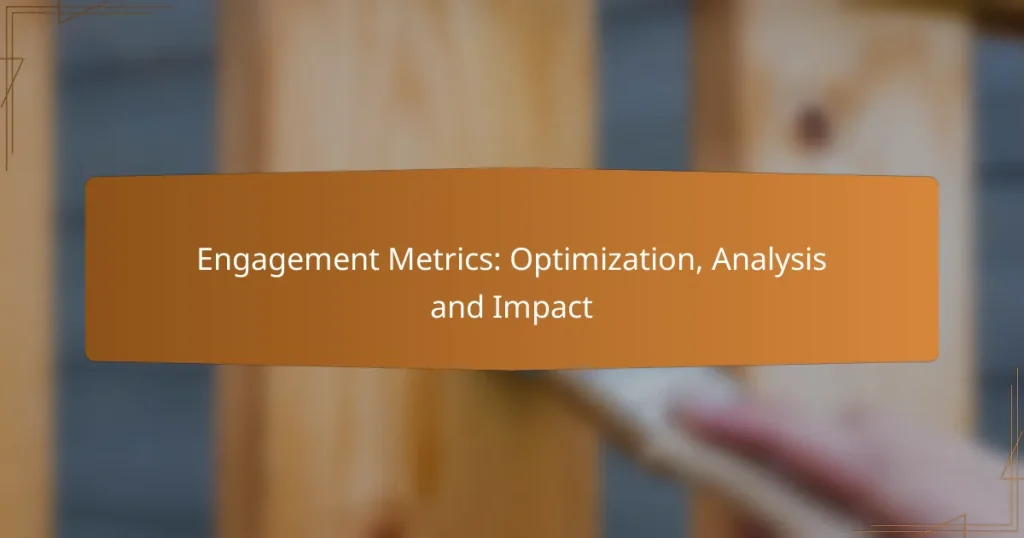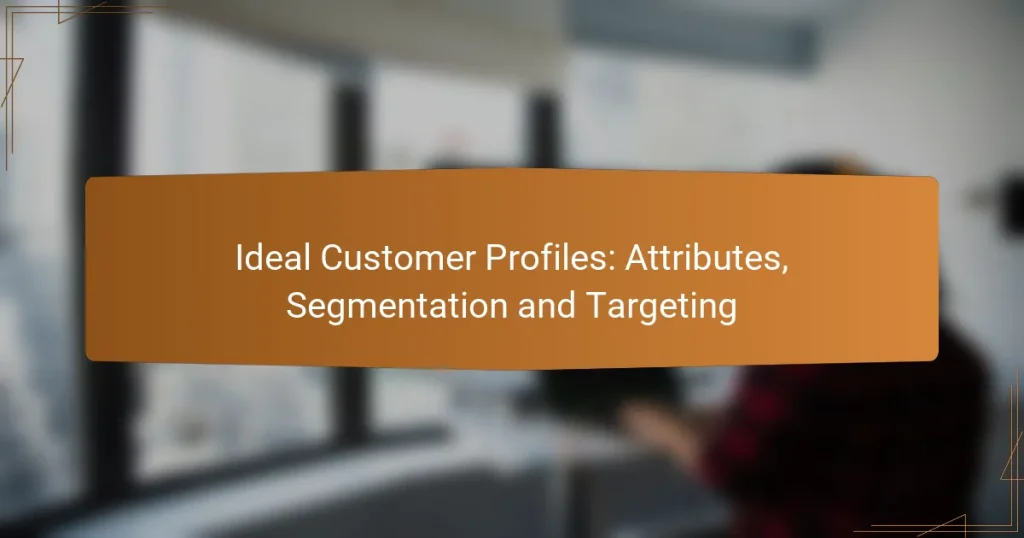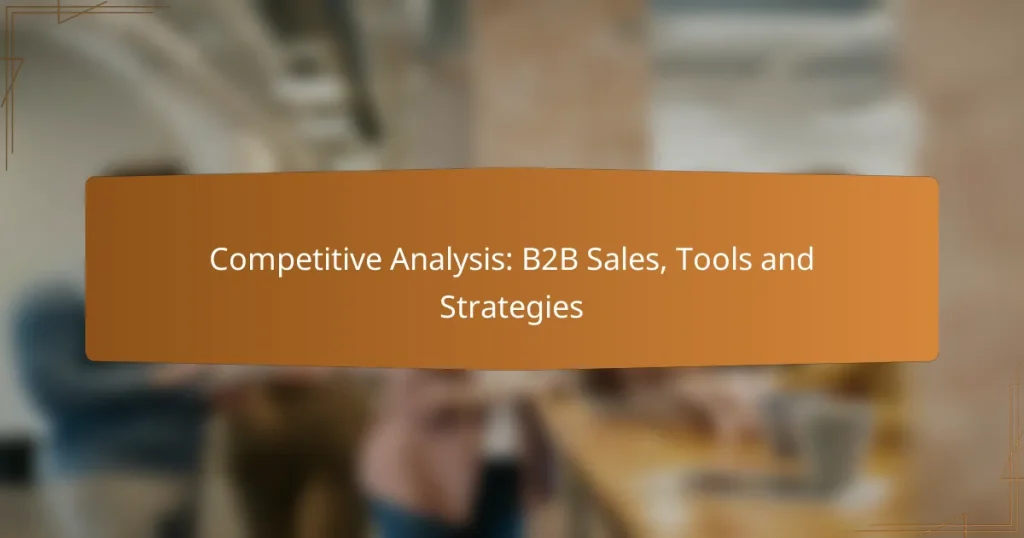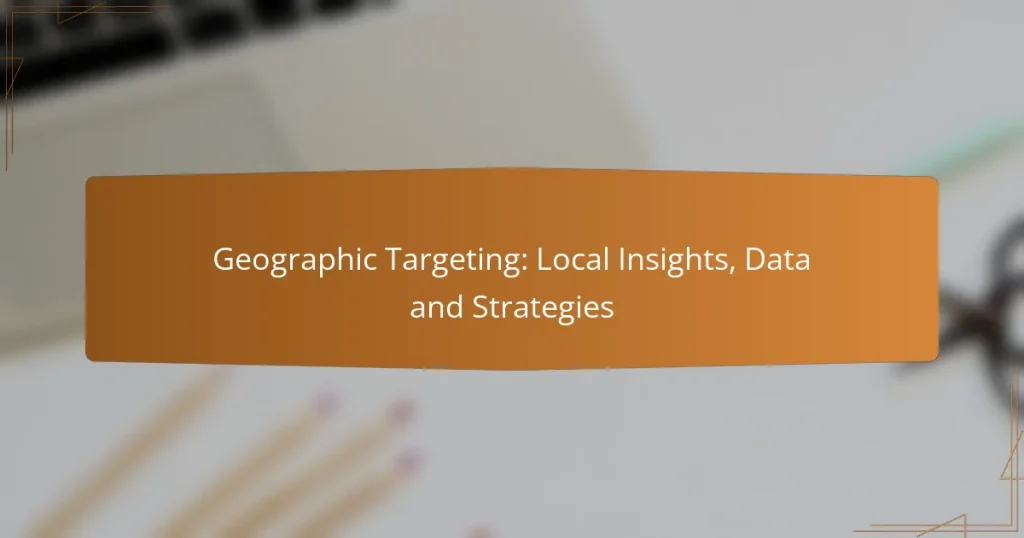Targeting strategies for LinkedIn Sales Navigator are essential for identifying and engaging the right audience to enhance sales opportunities. By leveraging advanced search techniques and utilizing features such as account-based marketing and lead scoring, you can streamline your outreach efforts and improve your chances of success.
Targeting Decision Makers: Tech Startups, Roles and Engagement
Ideal Customer Profiles: Attributes, Segmentation and Targeting
Competitive Analysis: B2B Sales, Tools and Strategies
Lead Segmentation: Industry, Demographics and Behavior
Geographic Targeting: Local Insights, Data and Strategies
Custom Lists: Niche Markets, Criteria and Outreach
What are effective targeting strategies for LinkedIn Sales Navigator?
Effective targeting strategies for LinkedIn Sales Navigator focus on identifying and engaging the right audience to maximize sales opportunities. Utilizing features like account-based marketing, lead scoring, and geographic targeting can significantly enhance your outreach efforts.
Account-based marketing
Account-based marketing (ABM) involves tailoring your sales efforts to specific high-value accounts rather than a broad audience. This strategy requires thorough research to understand the needs and pain points of each target account, allowing for highly personalized communication.
To implement ABM, create detailed profiles for each account, including key decision-makers and their roles. Use LinkedIn Sales Navigator to track these accounts and engage with relevant content that resonates with their business challenges.
Lead scoring techniques
Lead scoring techniques help prioritize potential customers based on their likelihood to convert. By assigning scores to leads based on criteria such as engagement level, company size, and industry, you can focus your efforts on the most promising prospects.
Establish a scoring system that reflects your business goals, and regularly review and adjust it based on the performance of your leads. This will ensure that your targeting remains relevant and effective over time.
Industry segmentation
Industry segmentation involves categorizing your target market into specific industries to tailor your messaging and approach. This strategy allows you to address the unique challenges and needs of each sector, increasing the relevance of your outreach.
Use LinkedIn Sales Navigator’s filters to identify leads within particular industries, and customize your content to speak directly to their interests. For instance, if targeting the tech sector, highlight innovations and solutions that resonate with tech professionals.
Geographic targeting
Geographic targeting focuses on reaching prospects in specific locations, which can be crucial for businesses with regional offerings or localized services. This strategy allows you to tailor your messaging based on local market conditions and cultural nuances.
Utilize LinkedIn’s geographic filters to identify leads in your desired areas. Consider local regulations, economic conditions, and cultural factors when crafting your outreach to ensure it aligns with the expectations of your target audience.
Personalized outreach
Personalized outreach is about crafting messages that resonate with individual prospects rather than using generic templates. This approach increases engagement and builds stronger relationships with potential clients.
To personalize your outreach, reference specific details about the prospect’s company, recent achievements, or shared connections. Tools like LinkedIn Sales Navigator can help you gather this information, allowing you to create tailored messages that stand out in a crowded inbox.
How can I optimize my LinkedIn Sales Navigator searches?
To optimize your LinkedIn Sales Navigator searches, focus on using advanced search techniques and filters to narrow down your results effectively. This approach helps you identify the most relevant leads and opportunities, saving time and increasing your chances of success.
Using Boolean search operators
Boolean search operators allow you to refine your LinkedIn Sales Navigator searches by combining keywords with specific commands. Use operators like AND, OR, and NOT to create complex queries that target your desired audience more precisely.
For example, if you’re looking for marketing professionals in New York, you might search for “marketing AND New York.” To exclude certain terms, you could use “marketing NOT sales” to filter out unwanted results. This technique can significantly enhance the relevance of your search results.
Applying filters effectively
LinkedIn Sales Navigator offers various filters that can help you narrow down your search results based on criteria such as industry, company size, location, and seniority level. Applying these filters effectively allows you to target specific segments of your market.
For instance, if you want to connect with decision-makers in the technology sector, set the industry filter to “Technology” and the seniority level to “Director” or “C-Level.” This targeted approach can lead to higher engagement rates and more meaningful connections.
Saving searches for future use
Saving searches in LinkedIn Sales Navigator is a practical way to streamline your lead generation efforts. Once you’ve set up a search with your preferred criteria, you can save it and revisit it later without having to re-enter all the parameters.
To save a search, simply click on the “Save Search” option after performing your search. You can also set up alerts to notify you when new leads match your saved criteria, ensuring you stay updated on potential opportunities without constant manual searching.
What are the best practices for connecting with leads on LinkedIn?
To effectively connect with leads on LinkedIn, focus on personalization, engagement, and strategic follow-ups. These practices enhance your chances of building meaningful relationships and converting leads into clients.
Crafting personalized connection requests
Personalized connection requests significantly increase the likelihood of acceptance. Start by mentioning a common interest, mutual connection, or specific reason for reaching out. For example, you might say, “I noticed we both attended the same conference last year and would love to connect to share insights.”
Avoid generic messages; instead, tailor each request to the individual. This shows genuine interest and can lead to more fruitful conversations.
Engaging with content before outreach
Engaging with a lead’s content before sending a connection request can create familiarity and rapport. Like, comment, or share their posts to demonstrate your interest in their work. This interaction can make your subsequent outreach feel more natural and less intrusive.
Consider setting aside time each week to engage with key prospects’ content. This consistent interaction can help you stay top-of-mind and establish a connection before formal outreach.
Following up strategically
After sending a connection request, a follow-up message can reinforce your intent. If they accept, thank them and briefly introduce yourself or share a relevant resource. If they don’t respond, wait a week or two before sending a gentle reminder.
Keep follow-ups concise and focused on value. For instance, you might say, “I came across this article on industry trends and thought you might find it interesting.” This approach keeps the conversation relevant and engaging.
How do I measure the success of my LinkedIn targeting strategies?
Measuring the success of your LinkedIn targeting strategies involves analyzing key performance indicators that reflect your outreach effectiveness. Focus on connection acceptance rates, engagement metrics, and lead conversion rates to gain insights into your strategy’s performance.
Tracking connection acceptance rates
Connection acceptance rates indicate how many of your connection requests are accepted by potential leads. A good benchmark is an acceptance rate of around 20-30%, but this can vary based on your industry and target audience.
To track this metric, keep a record of the number of connection requests sent versus those accepted. Regularly review this data to identify patterns and adjust your outreach approach accordingly, such as personalizing connection requests to improve acceptance rates.
Analyzing engagement metrics
Engagement metrics measure how your connections interact with your content, such as likes, comments, and shares. High engagement rates suggest that your content resonates with your audience, while low rates may indicate a need for content strategy adjustments.
Utilize LinkedIn’s analytics tools to monitor these metrics. Aim for engagement rates of 2-5% on posts, and experiment with different content types, such as articles, videos, or polls, to see what drives the most interaction.
Evaluating lead conversion rates
Lead conversion rates reflect the percentage of leads that turn into paying customers. A typical conversion rate for B2B sales can range from 1-5%, depending on the industry and sales cycle length.
To evaluate this metric, track the number of leads generated through LinkedIn and how many of those leads result in sales. Regularly analyze this data to identify successful strategies and areas for improvement, ensuring your targeting efforts align with your sales goals.
What tools can enhance LinkedIn Sales Navigator targeting?
Several tools can significantly improve targeting capabilities within LinkedIn Sales Navigator. Integrating CRM systems and utilizing automation platforms can streamline processes, enhance data management, and ultimately boost sales efficiency.
HubSpot CRM integration
Integrating HubSpot CRM with LinkedIn Sales Navigator allows for seamless data synchronization between the two platforms. This integration helps sales teams manage leads more effectively by providing insights into customer interactions and tracking engagement metrics.
To set up the integration, users can connect their HubSpot account directly within Sales Navigator settings. This connection enables automatic updates of contact information and activity logs, ensuring that sales representatives have the most current data at their fingertips.
Zapier automation
Zapier can automate repetitive tasks between LinkedIn Sales Navigator and other applications, enhancing workflow efficiency. By creating “Zaps,” users can trigger actions in one app based on events in another, such as adding new leads to a mailing list or updating CRM records.
For example, a Zap can be set to automatically add new LinkedIn connections to a Google Sheets spreadsheet, allowing for easy tracking and follow-up. This automation reduces manual data entry and minimizes the risk of errors, making it a valuable tool for sales teams looking to optimize their targeting strategies.






